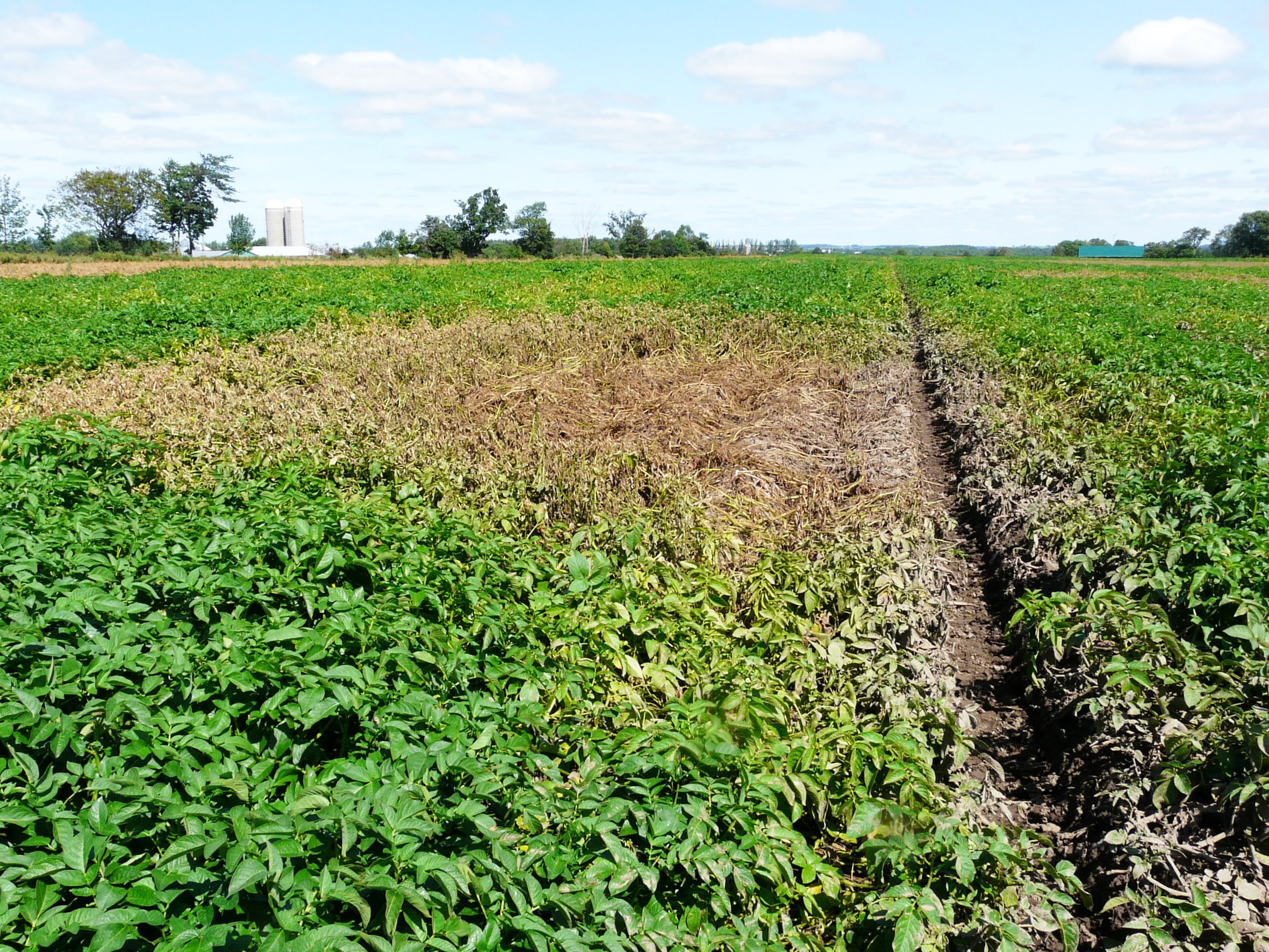Excerpts from Mathuresh Singh’s presentation on PVY at the 2023 Ontario Potato Conference.
Potato virus Y (PVY) has re-emerged over the last decade as a serious, yield-limiting viral disease that’s a threat to potato production worldwide. The virus infects many crop species in the family Solanaceae, and infected seed is the most important source of inoculum in potato fields. Infection levels (two to three per cent) don’t usually cause problems, but this is a virus that spreads easily in infected tubers, by plant sap and aphids, including those that don’t colonize potatoes. Cutting infected seed doesn’t move PVY from infected seed to healthy ones. Mechanical transmission during the season is caused by tractors and sprayers. Growers have every reason to be concerned.
PVY is an evolving cluster of genetically related multiple strains. Symptoms vary with the strain, the variety, and the growing conditions. There is a common strain PVYo that causes mosaic on the leaves of most potato varieties. Sometimes this appears as a roughening of the leaves. The necrotic strain PVYNTN causes milder mosaic in the leaves, but does lead to tuber necrosis in susceptible potato varieties, a condition referred to as potato tuber necrotic ringspot disease (PTNRD). All strains cause a reduction in yield — the necrotic strains make the tubers unmarketable.
The virus is transmitted when an aphid probes the plants. This brief “taste testing” lasts from several seconds to several minutes. It’s long enough for aphids to acquire the virus and to inoculate healthy plants if the aphids have fed on an infected plant previously. PVY is difficult to control because acquisition and infection happen so rapidly. Insecticides may help to reduce aphid numbers in a field but aphids entering from other fields have enough time to spread of virus because no insecticide acts quickly enough during “taste testing”.
How do aphids influence PVY? Studies in New Brunswick have shown:
- High aphid numbers can occur very early in the spring often before the potato crop has emerged
- Significant numbers of aphids in these early flights can carry PVY
- The early and late peaks of aphid flights are mostly non-colonizing or unidentified species, the “taste testers”
- The flights of colonizing potato aphids peak in August
- High levels of green peach aphid, the most efficient PVY vector, are observed at the end of season
Aphids can transmit PVY in potato crops throughout the growing season. The levels in crops increase with:
- The length of time plants are growing in the field
- The length of time from planting until first foliar mineral oil/insecticide spray
- Late top killing
The main factors that reduce the spread of PVY are the following:
- Plant clean/low PVY infected seed
- Plant resistant varieties
- Spray oil frequently, at least once a week, at a rate of two literes per acre or more
- Start spraying oil early, at 20 to 30 per cent emergence, and continue spraying until vine kill
- Combined mineral oil-insecticide sprays are best. Add insecticides to the mineral oil spray at least two times early in the season — one time mid-season and two times late in the season.
- Rotate insecticides with different modes of action. The most promising insecticides are Lambda-cyhalothrin (Matador, Silencer, Labamba), Deltamethrin (Decis, Concept) and Flonicamid (Beleaf)
- The pyrethroid Decis when sprayed in combination with mineral oil shows similar effectiveness to Silencer at a similar cost
- Substituting the mixed pyrethroid-neonicotinoid Concept shows even greater PVY reduction, but at considerably higher cost
- Pyrethroid insecticides are retained in leaves longer when combined with mineral oil
- Minimize tractor traffic in field to reduce mechanical PVY transmission and focus on rogueing
- Check labels to make sure tank mixing is allowed
An ounce of prevention is worth a pound of cure!
Header photo — Circles of dead plants caused by green peach aphid. Photo: Eugenia Banks
Related Articles
Detecting Potato Necrotic Viruses Faster








